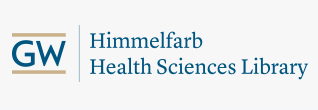Variation in the management and treatment of children with giant coronary artery aneurysm following Kawasaki disease
Document Type
Journal Article
Publication Date
11-11-2024
Journal
Cardiology in the young
DOI
10.1017/S1047951124026829
Keywords
Kawasaki disease; giant coronary artery aneurysm; global survey; management; treatment
Abstract
OBJECTIVES: Giant coronary artery aneurysms are rare but potentially fatal complications of Kawasaki disease. The lack of evidence-based recommendations on their management and treatment cause guidelines and practices to differ. We aimed to assess these variations. METHODS: An anonymous online survey regarding surveillance, imaging, pharmacological management, and interventional practices was distributed among 134 physicians attending to Kawasaki disease patients worldwide. A p-value of <0.05 was deemed significant. RESULTS: The majority (60%) of respondents were general paediatric cardiologists, and 29% interventional specialists. The average years in practice was 15 ± 9.6. Physicians from Asia had the most experience with giant coronary artery aneurysms. American practitioners preferred combining anticoagulants with aspirin. Beta-blockers and statins were more likely used in teenagers versus younger children. Cardiac catheterisation was most (52%) chosen for coronary surveillance in patients with echocardiogram anomalies, followed by Coronary CT-angiography. The indications for coronary intervention were split among respondents, regardless of geographic region or experience. The preferred treatment of coronary stenosis was percutaneous intervention (69%) versus bypass surgery. For thrombosis, thrombolytics (50%) were preferred over percutaneous (39%) and surgical (11%) interventions. Most (92%) preferred intervening in young children in a paediatric facility but were split between a paediatric and adult facility for older children. Most chose combined management by adult and paediatric specialists for either age-scenarios (70, 82%). CONCLUSION: As identified by our study, the lack of large studies and evidence-based recommendations cause uncertainty and ambivalence towards certain treatments. International collaborative efforts are needed to provide more robust evidence in the management of these patients.
APA Citation
Chen, Mia; Dionne, Audrey; Choueiter, Nadine F.; Harahsheh, Ashraf S.; Tierney, Seda; Navarro Castellanos, Iñaki; and Dahdah, Nagib, "Variation in the management and treatment of children with giant coronary artery aneurysm following Kawasaki disease" (2024). GW Authored Works. Paper 6016.
https://hsrc.himmelfarb.gwu.edu/gwhpubs/6016
Department
Pediatrics

